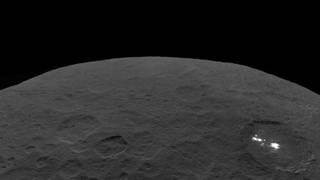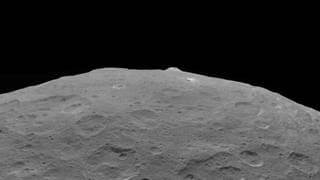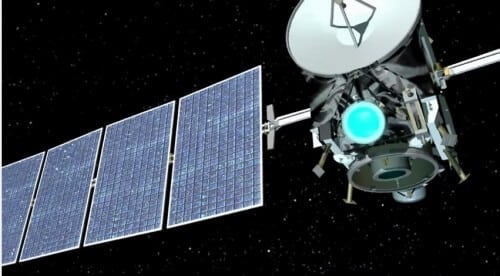The DAWN spacecraft missed scheduled communications sessions with NASA's Deep Space Network on Wednesday, October 31, and Thursday, November 1. After flight control personnel ruled out other possible causes for the communication loss, mission managers concluded that the spacecraft had run out of hydrazine fuel, which allows the spacecraft to control the spacecraft's direction, and could no longer keep the antennas pointed toward Earth to communicate with mission control or direct the The solar panels face the sun to charge the battery

NASA's DAWN spacecraft has gone silent, ending a historic mission in which it explored time capsules from the early days of the solar system.
DAWN missed scheduled communications sessions with NASA's Deep Space Network on Wednesday, October 31, and Thursday, November 1. After flight control personnel ruled out other possible causes for the communication loss, mission managers concluded that the spacecraft had run out of hydrazine fuel, which allows the spacecraft to control the spacecraft's direction, and could no longer keep the antennas pointed toward Earth to communicate with mission control or direct the The solar panels face the sun to charge the battery.
The DAWN spacecraft was launched 11 years ago to visit the two largest objects in the main asteroid belt. Currently, it is in orbit around the dwarf planet Ceres, where it will remain for decades.
“Today, we celebrate the end of the DAWN mission. Its amazing technical achievements, the vital science it will provide us, and thanks to the entire team that made it possible for the spacecraft to make these discoveries," said Thomas Zorbuchen, the spacecraft's scientific director at NASA Headquarters in Washington. "The amazing photographs and data that DAWN collected from Vesta and Ceres are essential to understanding the history and evolution of our solar system."
DAWN was launched in 2007 on a journey that lasted 6.9 billion km and was powered by an ion engine. The spacecraft achieved many pioneering achievements along the way. In 2011, when DAWN reached asteroid Vesta, it was the first to orbit the Sun in an orbit between Mars and Jupiter. In 2015, when DAWN entered orbit around Ceres, a dwarf planet that is also the largest world in the asteroid belt, she became the first to visit a dwarf planet and the first to enter orbit around two space objects.
Mission Manager Mark Reiman from NASA's Jet Propulsion Laboratory (JPL), says, "The demands we made of Dawn were enormous, but every time she met the challenge. It's hard to say goodbye to this amazing spaceship, but the time has come."

DAWN data transmitted to Earth from the four science experiments allowed scientists to compare two planet-like worlds that evolved very differently. Among her achievements, Dawn showed how important the location in which objects formed and evolved in the early solar system was important. Dawn also reinforced the idea that dwarf planets could have harbored oceans for much of their history, and still can.
"In many ways, the Dawn legacy is just beginning," said Dawn principal investigator Carol Raymond of JPL. "All Dawn data will be analyzed by scientists studying how planets grow and when and where life could have formed in our solar system. Ceres and Vesta are important for the study of distant planetary systems, as they provide a glimpse into the conditions that may exist around young stars."
Because Ceres has conditions of interest to those who study the chemistry that led to the development of life, NASA is careful to follow protocols to protect the planets. Dawn will remain in orbit for at least 20 years, and engineers even believe there is a more than 99% confidence chance that it will remain in a stable orbit for at least 50 years.
In any case, the plan did not include a crash landing on a hook, as was the case, for example, with Cassini on Saturn last year. But NASA says Dawn used every drop of hydrazine to dye scientific observations on the hook and transmit them to us so we can learn more about our solar system.

For information on the NASA website
More of the topic in Hayadan:
